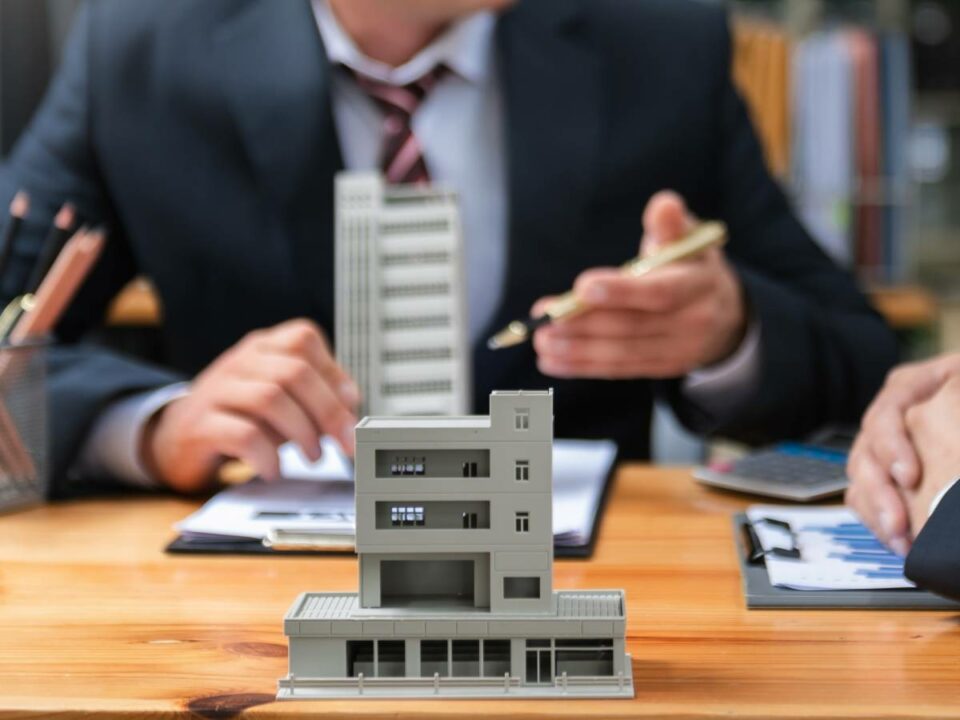Hey there, folks! It’s Mike Tolj, your neighborhood commercial real estate expert. Today, I want to talk about something that’s been on everyone’s mind lately: the evolution of retail spaces. As someone who’s been in the industry for over 18 years, I’ve seen firsthand how the retail landscape has changed, and let me tell you, it’s been quite a ride!
Key Takeaways
- The retail industry has undergone a significant transformation, with the rise of e-commerce and the integration of digital technologies.
- Brick-and-mortar stores must adapt and reinvent themselves to remain relevant in the ever-changing retail landscape.
- The future of retail lies in creating seamless omnichannel experiences, leveraging technology, and embracing sustainable practices.
The Evolution of Traditional Retail
Let’s take a trip down memory lane, shall we? Remember the good old days when brick-and-mortar stores were the king of the hill? You’d walk into a store, browse the aisles, and maybe even strike up a conversation with the friendly salesperson. It was a simpler time, but as with everything in life, change was inevitable.
Traditional retailers have faced their fair share of challenges in recent years:
- Increased competition from online retailers
- Changing consumer preferences
- The need to adapt to new technologies
How Have Commercial Areas Changed Over Time?
The Past, Present, and Future of Retail
History of Retail: From First Retail Stores to Modern Giants
The history of retail spans centuries, with the first retail stores emerging in the 18th and 19th centuries. These early establishments, often family-owned and operated, provided goods and services directly to customers in their local communities.
As time progressed, the retail landscape evolved, giving rise to department stores, shopping centers, and eventually, the modern retail giants we know today. From mom-and-pop shops to industry titans like Walmart and Amazon, the retail sector has undergone a remarkable transformation, shaped by changing consumer preferences, technological advancements, and shifting economic conditions.
Retail Landscape: Understanding the Retail Sector Today
Today’s retail landscape is a complex and dynamic ecosystem, encompassing a wide range of businesses, from brick-and-mortar stores to e-commerce platforms. The retail sector is driven by a combination of factors, including consumer behavior, market trends, and technological innovations.
Brick-and-mortar stores continue to play a significant role, offering unique in-store experiences and personalized service, while online retailers leverage the power of digital platforms to reach customers across the globe. The retail market is highly competitive, with businesses vying for customer attention and loyalty through a variety of strategies, such as omnichannel integration, personalized marketing, and sustainable practices.
Future Trends: Navigating the Digital World in Retail
As the retail sector continues to evolve, businesses must adapt to the digital world to remain competitive. The future of retail is increasingly digital, with e-commerce, mobile commerce, and social commerce playing a central role in how consumers shop and interact with brands. To succeed in this digital landscape, retailers must embrace technology, leveraging tools like data analytics, artificial intelligence, and augmented reality to enhance the customer experience and streamline operations.
Additionally, the rise of digital-native brands and direct-to-consumer models is reshaping the retail sector, challenging traditional business models and driving innovation. As the retail landscape continues to transform, businesses that can effectively navigate the digital world and adapt to changing consumer preferences will be well-positioned for success in the years to come.
Retailer Strategies and Trends
Customer Experience: Crafting In-Store Experiences
In the face of increasing competition from online retailers, brick-and-mortar stores are focusing on creating memorable and engaging in-store experiences to attract and retain customers. By leveraging technology, such as interactive displays and augmented reality, retailers can offer immersive and personalized shopping experiences that cannot be replicated online. Additionally, by training staff to provide exceptional customer service and offering unique events and workshops, retailers can create a sense of community and foster customer loyalty.
Inventory Management: Adapting to the E-Commerce Challenge
Effective inventory management has become increasingly critical for retailers as they navigate the challenges posed by e-commerce. With customers expecting fast and reliable delivery, retailers must optimize their inventory systems to ensure that products are readily available when and where they are needed. This often involves leveraging technology, such as real-time inventory tracking and predictive analytics, to forecast demand and streamline supply chain operations.
Additionally, by implementing strategies like just-in-time inventory and dropshipping, retailers can reduce the costs associated with holding excess inventory and improve their ability to respond to changing customer demands. As e-commerce continues to grow, retailers that can effectively manage their inventory will be better positioned to compete in the digital marketplace.
Brick-and-Mortar vs. Online Retail: Balancing the Digital and Physical
As the retail landscape evolves, businesses are increasingly recognizing the importance of balancing their brick-and-mortar and online presence. While e-commerce has grown rapidly in recent years, physical stores still play a vital role in the retail ecosystem, offering customers the opportunity to see, touch, and try products before making a purchase. To succeed in this hybrid environment, retailers must develop omnichannel strategies that seamlessly integrate their digital and physical channels.
This may involve offering services like buy online, pick up in-store (BOPIS), providing consistent branding and messaging across all touchpoints, and leveraging customer data to personalize the shopping experience. By effectively balancing their brick-and-mortar and online presence, retailers can create a cohesive and convenient shopping experience that meets the evolving needs and preferences of their customers.
The Emergence of E-commerce
Enter the age of e-commerce. With the click of a button, you could have anything your heart desired delivered right to your doorstep. It was like magic! Online shopping has grown exponentially over the years, and it’s not hard to see why. The convenience, the endless options, and the ability to compare prices have made digital platforms a force to be reckoned with.
But what does this mean for our beloved brick-and-mortar stores? Well, it’s not all doom and gloom, my friends.

The Role of Technology in Retail Transformation
Technology has played a huge role in the transformation of the retail industry. It’s not just about having a website anymore; it’s about leveraging data analytics to gain insights into customer behavior, using augmented reality to enhance the shopping experience, and implementing artificial intelligence to personalize recommendations.
Retailers who embrace technology are the ones who will thrive in this new era of retail.
Bridging the Gap: Omnichannel Retail
So, how do we bridge the gap between online and offline retail? The answer lies in omnichannel retail. It’s all about creating a seamless experience for the customer, whether they’re shopping online, in-store, or a combination of both.
Some successful examples of omnichannel retailers include:
- Walmart: Offering in-store pickup for online orders
- Sephora: Providing virtual try-on features for makeup products
- Nike: Allowing customers to customize their shoes online and pick them up in-store
Enhancing the In-Store Experience
Just because e-commerce is on the rise doesn’t mean brick-and-mortar stores are going extinct. In fact, many retailers are finding new ways to enhance the in-store experience and keep customers coming back for more.
Some innovative strategies include:
- Creating immersive and interactive displays
- Offering unique events and workshops
- Providing personalized recommendations and services
The Rise of Sustainable and Ethical Retail Practices
Sustainability and ethical practices have become increasingly important to consumers in recent years. Retailers who embrace these values are not only doing their part for the environment but also building customer loyalty and enhancing their brand reputation.
From using eco-friendly packaging to partnering with fair trade suppliers, there are many ways retailers can incorporate sustainability into their business practices.
Leveraging Social Commerce and Influencer Marketing
Social media has become a powerful tool for retailers looking to reach new audiences and drive sales. By partnering with influencers and leveraging social commerce features, retailers can tap into the power of word-of-mouth marketing and create buzz around their products.
Some effective strategies for social commerce campaigns include:
- Creating shoppable posts on Instagram
- Partnering with micro-influencers for authentic product recommendations
- Encouraging user-generated content and reviews
The Future of Retail Spaces
So, what does the future hold for retail spaces? While none of us have a crystal ball, one thing is for sure: the retailers who adapt and innovate will be the ones who thrive.
We can expect to see more technology integration, a greater focus on experiential retail, and a continued shift toward sustainable practices. It’s an exciting time to be in the retail industry, and I can’t wait to see what the future holds!
Real Estate Dynamics in the Retail Market
Retail Space Management: Commercial Real Estate Services
Commercial real estate services play a crucial role in the management and optimization of retail spaces. From site selection and lease negotiation to property management and tenant representation, these services help retailers navigate the complex world of real estate. By leveraging market insights and industry expertise, commercial real estate professionals can help retailers identify the most suitable locations for their businesses, negotiate favorable lease terms, and ensure that their physical spaces are well-maintained and optimized for success.
Retail Centers and Their Evolution: From Malls to Mixed-Use
Retail centers have undergone a significant transformation in recent years, adapting to changing consumer preferences and the rise of e-commerce. Traditional enclosed malls, once the dominant format for retail real estate, have faced challenges as anchor tenants like department stores have struggled to maintain their relevance. In response, many retail centers are evolving into mixed-use developments, incorporating a diverse mix of tenants, including restaurants, entertainment venues, and residential units.
Tenant Mix in Retail Real Estate: From Department Stores to Digital Brands
The tenant mix in retail real estate has undergone a significant shift in recent years, reflecting the changing nature of the retail industry. While department stores and other traditional anchor tenants once dominated retail centers, the rise of e-commerce and changing consumer preferences have led to a more diverse and dynamic tenant mix. Today, successful retail centers often feature a mix of traditional retailers, digital-native brands, and experiential tenants like restaurants and entertainment venues.
Bridging the Gap: Omnichannel Retail
So, how do we bridge the gap between online and offline retail? The answer lies in omnichannel retail. It’s all about creating a seamless experience for the customer, whether they’re shopping online, in-store, or a combination of both.
Some successful examples of omnichannel retailers include:
- Walmart: Offering in-store pickup for online orders
- Sephora: Providing virtual try-on features for makeup products
- Nike: Allowing customers to customize their shoes online and pick them up in-store
Enhancing the In-Store Experience
Just because e-commerce is on the rise doesn’t mean brick-and-mortar stores are going extinct. In fact, many retailers are finding new ways to enhance the in-store experience and keep customers coming back for more.
Some innovative strategies include:
- Creating immersive and interactive displays
- Offering unique events and workshops
- Providing personalized recommendations and services
The Rise of Sustainable and Ethical Retail Practices
Sustainability and ethical practices have become increasingly important to consumers in recent years. Retailers who embrace these values are not only doing their part for the environment but also building customer loyalty and enhancing their brand reputation.
From using eco-friendly packaging to partnering with fair trade suppliers, there are many ways retailers can incorporate sustainability into their business practices.
Leveraging Social Commerce and Influencer Marketing
Social media has become a powerful tool for retailers looking to reach new audiences and drive sales. By partnering with influencers and leveraging social commerce features, retailers can tap into the power of word-of-mouth marketing and create buzz around their products.
Some effective strategies for social commerce campaigns include:
- Creating shoppable posts on Instagram
- Partnering with micro-influencers for authentic product recommendations
- Encouraging user-generated content and reviews
The Future of Retail Real Estate and Retail Spaces
So, what does the future hold for retail spaces? While none of us have a crystal ball, one thing is for sure: the retailers who adapt and innovate will be the ones who thrive.
We can expect to see more technology integration, a greater focus on experiential retail, and a continued shift toward sustainable practices. It’s an exciting time to be in the retail industry, and I can’t wait to see what the future holds!
Real Estate Dynamics in the Retail Market
Commercial real estate services play a crucial role in the management and optimization of retail spaces. From site selection and lease negotiation to property management and tenant representation, these services help retailers navigate the complex world of real estate. By leveraging market insights and industry expertise, commercial real estate professionals can help retailers identify the most suitable locations for their businesses, negotiate favorable lease terms, and ensure that their physical spaces are well-maintained and optimized for success.
Retail Centers and Their Evolution: From Malls to Mixed-Use
Retail centers have undergone a significant transformation in recent years, adapting to changing consumer preferences and the rise of e-commerce. Traditional enclosed malls, once the dominant format for retail real estate, have faced challenges as anchor tenants like department stores have struggled to maintain their relevance. In response, many retail centers are evolving into mixed-use developments, incorporating a diverse mix of tenants, including restaurants, entertainment venues, and residential units.
Tenant Mix in Retail Real Estate: From Department Stores to Digital Brands
The tenant mix in retail real estate has undergone a significant shift in recent years, reflecting the changing nature of the retail industry. While department stores and other traditional anchor tenants once dominated retail centers, the rise of e-commerce and changing consumer preferences have led to a more diverse and dynamic tenant mix. Today, su
| Aspect | Key Points |
|---|---|
| Challenges faced by traditional retailers | – Increased competition from online retailers – Changing consumer preferences – Need to adapt to new technologies |
| History of retail | – First retail stores in the 18th and 19th centuries – Evolution from mom-and-pop shops to modern retail giants – Shaped by changing consumer preferences, technology, and economics |
| Current retail landscape | – Complex ecosystem of brick-and-mortar and e-commerce – Driven by consumer behavior, market trends, and technology – Competition through omnichannel integration, personalization, and sustainability |
| Future retail trends | – Increasingly digital (e-commerce, mobile, social) – Technology adoption (data analytics, AI, AR) – Rise of digital-native brands and DTC models |
| Retailer strategies and trends | – Crafting in-store experiences<be> – Adapting inventory management for e-commerce – Balancing brick-and-mortar and online presence – Omnichannel retail examples (Walmart, Sephora, Nike) – Enhancing in-store experience – Sustainable and ethical practices – Social commerce and influencer marketing |
| Real estate dynamics in retail | – Commercial real estate services for retail space management – Evolution of retail centers from malls to mixed-use – Shift in tenant mix from department stores to digital brands |

FAQs
What are the biggest challenges facing brick-and-mortar stores today?
Brick-and-mortar stores face significant challenges, including increased competition from online retailers, changing consumer preferences, and the need to adapt to new technologies. To remain relevant, they must find ways to differentiate themselves, offer unique experiences, and integrate digital solutions seamlessly into their operations.
How can retailers create a seamless omnichannel experience for customers?
To create a seamless omnichannel experience, retailers must ensure consistency across all touchpoints, including online, in-store, and mobile. This can be achieved through integrated inventory management, personalized recommendations, and flexible fulfillment options such as buy online, pick up in-store (BOPIS), or curbside pickup.
What role does technology play in the future of retail spaces?
Technology plays a crucial role in the future of retail spaces, enabling retailers to gather valuable customer insights, personalize experiences, and streamline operations. From augmented reality and artificial intelligence to data analytics and automation, technology will continue to shape the way retailers interact with customers and run their businesses.
How can retailers incorporate sustainable practices into their business models?
Retailers can incorporate sustainable practices by sourcing eco-friendly materials, reducing waste, and optimizing supply chains. They can also partner with environmentally conscious brands, implement recycling programs, and educate customers about the importance of sustainability. By embracing sustainability, retailers can appeal to environmentally conscious consumers and enhance their brand reputation.
What are some effective strategies for leveraging social commerce and influencer marketing?
Effective strategies for leveraging social commerce and influencer marketing include creating shoppable posts, partnering with micro-influencers for authentic product recommendations, and encouraging user-generated content. Retailers can also use social media to showcase their products, engage with customers, and run targeted advertising campaigns to drive sales and build brand awareness.
What impact have store closures had on the retail industry?
Store closures have forced retailers to reevaluate their strategies and focus on omnichannel approaches that combine online and in-store experiences.
How can retailers prepare for the future of retail?
Retailers can prepare for the future by investing in technology, personalizing the shopping experience, and adapting their offerings to meet changing consumer demands.
Conclusion
Well, folks, there you have it: a whirlwind tour of the evolution of retail spaces. From the rise of e-commerce to the importance of omnichannel experiences, the retail industry has undergone a major transformation in recent years.
As a commercial real estate expert, my advice to retailers is this: embrace change, leverage technology, and always put the customer first. By doing so, you’ll be well-positioned to succeed in this new era of retail.
If you’re a business owner or landlord looking to navigate the complex world of commercial real estate, I’m here to help. With over 18 years of experience and a track record of success, I’m confident I can help you achieve your real estate goals. So, what are you waiting for? Schedule a consultation with me today, and let’s make your retail dreams a reality!




